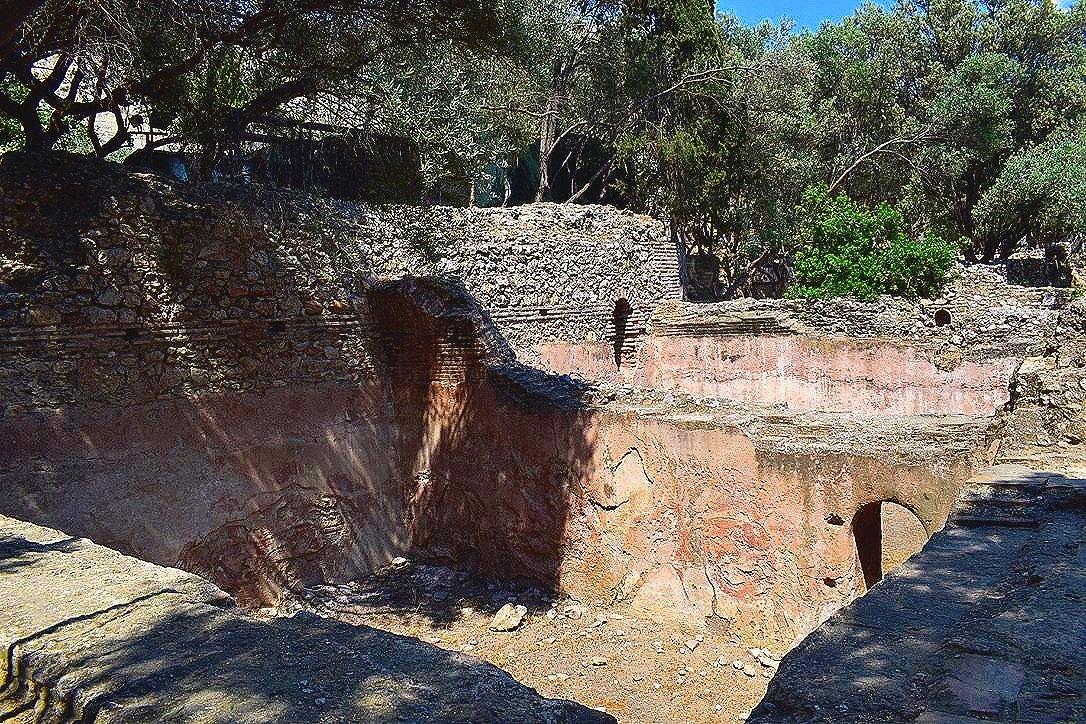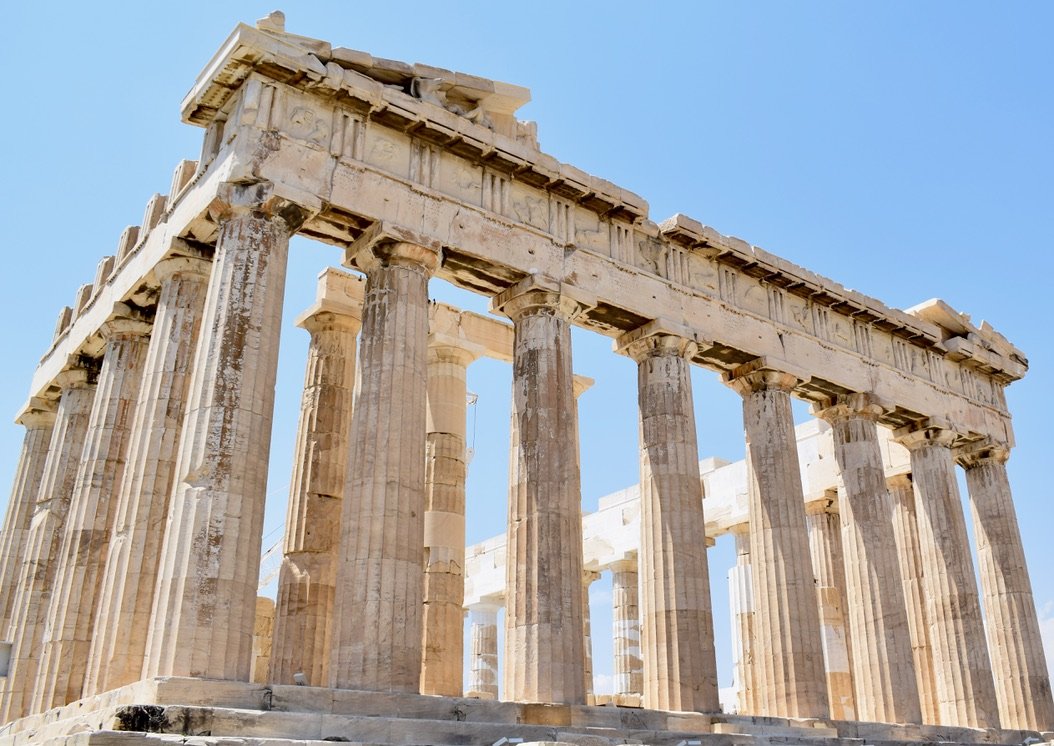Athens/ΑΘΗΝΑ
Let the adventures begin!
Dear Reader…
Did you think I had vanished? That I disappeared into the dark recesses of my frigid basement, pouring my attention into my studies and forgetting about my faithful readers? Never. How could I forget about the two, possibly three of you, that await, anxiously, might I add, for my critical eye to put forward a carousel of delectable ideas. Those of you who await a sprinkle of spice to some mouthwatering morsel of gossip to boost an idea’s flavour shall wait no longer. For I have returned and this writer does not so easily forget about his fans. On the contrary, while I observed the ever-increasing droves of mosquitos in my rural Ontario backyard over the past month, this writer has been thinking about your desires for ancient historical gossip. And, dear reader, I will satisfy your ravenous appetite as I have been discreetly collecting the ingredients for my mise-en-place. With each ingredient placed in its appropriate dish, by yours truly, of course, the anticipation to create a dish that is so tantalizing, one could not possibly resist my next pièce de résistance. It is finally here:
Athens.
Okay, let’s be frank. I have binged watched both of the Bridgerton seasons and I had to open this blog post in the voice of Lady Whistldown. Did it work?
Did you go back and read it in Whistledown/Julie Andrews’ voice?
I have just arrived in Athens/Αθηνα and will be here for the next few months to perform some research for the Inhabiting Byzantine Athens project and to fulfill my Ph.D. internship. Over the weeks, I will be posting about my exploits in Athens and surrounding regions. I will be researching the legacy data from the Athenian Agora, primarily middle-Byzantine coins, collected during the 1930s excavations. My goal: To (re)assess the data, (re)think about what it means, and (re)imagine how knowledge is produced from said collections. I am in Athens to learn about the curation techniques, data collection and the recording processes used during the 1930s excavations for the Byzantine coins. simultaneously, I am exploring how digital methods (Reflective Transformation Imaging or RTI) can aid in the (re)identification of coins and how such technology can be used to present coins in museums for public consumption.
I think, and this may change over time (as all research does), the primary question I like to address is: Should ancient coin collections and their associated data be “open-source”? Should there be a material culture platform like GitHub? Call it: MaCulGitHub! (Catchy, I know). Can digital methods support such lofty goals? My hypothesis is yes it can and we should adapt digital humanities into Byzantine numismatics to allow for a more inclusive environment in academic research.
Monument of Philopappos (114-116 CE), Philopappou Hill (Hill of the Muses), Athens, Greece. Photo: Scott Coleman, 2022.
Where are the coins you ask?
Well, I have not started my research as of yet. Soon, my friends. Soon. First, I need to get the touristy stuff out of the way. I arrived in Athens two days ago and I have been mostly walking around and exploring this fantastic city. My feet hurt but it is so worth it. Food, coffee, drinks, ruins, the Acropolis/ἂκροπόλις, Philopappou Hill/Λόφος Φιλοπαππού, and everything in between. I am in ancient nerd heaven! Or nerd Olympus? Meh, I am happy! Enough said.
Coffee and the Acropolis
It’s a Mocha and some will say this is not a coffee. I MUST DISAGREE, EMPHATICALLY.
They know who they are and I will forgive them for this baseless assertion.
My AirBnB is in Petralona/Πετράλωνα, on the west side of Philopappou Hill. It is very comfy and is only a fifteen-minute walk, or so, to the Athenian Agora/Αγoρα Αθηὦν and Stoa of Attalo/Στοά Αττάλου (where I will be doing my research). Petralona has an abundance of wonderful bakeries, cafés, bistros and small restaurants serving delicious Greek food. And there are Markets with local produce EVERYWHERE! Food Olympus!
Though, I have to admit the best part of this trip thus far has been Philopappou Hill. There are so many wonderful trails and ruins scattered over the hill that I find it hard to believe there are not more people visiting the Hill of the Muses instead of the Acropolis. However, that is just my opinion and please don’t get me wrong, the Acropolis is an amazing site for everyone to visit. With the Parthenon, Temple of Athena, Erechtheion and so much more to explore along the hillside of this UNESCO World Heritage Site, the Acropolis has something for everyone. Even Me!! Check out the Roman Cistern below.
Roman Cistern. Photo: Scott Coleman, 2022.
Ruins of the Temple of Athena (foreground) and the Erechtheion. Photo: Scott Coleman, 2022.
The rear of the Parthenon. Photo: Scott Coleman, 2022.
View from Philopappou Hill. Photo: Scott Coleman, 2022.
The photos above were taken on a Nikon D5300 with a Nikkor 18-55mm lens. Now, I am no photographer and I am learning as I go, and hopefully, the photos will get better. Next, I will be playing around with my Nikkor AF-S 60mm Micro lens. I want to compare it to the macro shots from my Olympus TG-3 Series. I am interested in the photo quality of each camera and the details they can highlight when taking photos of coins. Stay tuned for those results in the coming weeks.
To conclude, dear reader, this author’s ramblings are just a precursor of many more to grace whatever screen you wish to divulge your attention to. But let me be frank about my position, to you, my dear reader. I will try to write about my exploits as much as I can, when I can, whether short or long, during my stay in Athens. I will collect, organize and prepare a delicious bite of Athens multiple times a week. A goal that some may say is a bit overly ambitious for this writer, given my current and somewhat tenuous track record. But fear not, I have returned to deliver what you all desire most. Ancient Gossip. Right?







